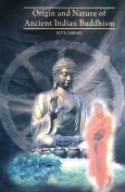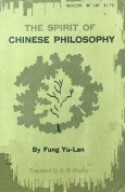Tìm Sách
Sách tiếng Anh-English >> The Heart of Buddhist Meditation
Thông tin tra cứu
- Tên sách : The Heart of Buddhist Meditation
- Tác giả : Nyanaponika Thera
- Dịch giả :
- Ngôn ngữ : Anh
- Số trang : 125
- Nhà xuất bản : The Word of the Buddha-Colombo
- Năm xuất bản : 1993
- Phân loại : Sách tiếng Anh-English
- MCB : 12100000011540
- OPAC :
- Tóm tắt :
FOREWORD
By Dr. E. Graham Howe
It gives me the greatest pleasure to have been asked by my venerable friend NYANAPONIKA THERA to write a foreword for this most important book. Although I am not a Buddhist, I studied meditation under him for a short while in October 1952 at the peaceful and delightful island monastery of DODANDUWA, Ceylon. It was as a result of what I learned from him, and with his introduction, that I flew to Rangoon, to study SATIPATTHÀNA under my meditation master, the Maha-Si Sayadaw, at the Thathana Yeiktha, Rangoon.
It is not only a difference of language, but also of view point, that makes it difficult for the Western to understand the Eastern mind. It was therefore with a shock of delight that I realised, during my talks with Nyanaponika Thera, that my first sense of disagreement was only due to the confusion and misunderstanding existing in my own mind. The more I studied with him, the more I could see the problem as he saw it, and the more my difficulties fell away. This was especially true of the doctrine of ANATTA (not-self), which I still regard, however, as the most difficult, although the most essential, point in all Buddhist teaching.
The more I studied SATIPATTHANA, the more impressed I became with it as a system of mind training. It is in line with our Western scientific attitude of mind, in that it is unprejudiced, objective and analy-tical. It relies on personal direct experience, and not on anyone else's ideas or opinions. It is exceedingly simple and makes use of ‘ bare attention' (basically as simple as a sustained ‘oh, look’), but within a carefully chosen and disciplined system. It therefore deplores all premature judgement, all talking ‘ about it and aboutall argument, discussion and such waste of time as we in the West are inclined to be too fond of. In fact, it gets you out of the rut and bondage of yourself, your prejudices, your cliches, your blindness and your self-opinionatedness, to set you free to see and prove a REAL world.
If you would ask me ‘ What is this REAL world after enlightenment ?’ of course I can only say that no one can tell another that. But the Enlightened One who gave us SATIPATTHANA says in effect ‘ Find out for yourself. Here is the means. Begin. Go on and SEE Meanwhile, the world becomes for the student a more vivid and wonderful place in which to live. The self is sternly purified: and the truth prevails, without the violence which always intrudes when someone has an axe to grind.
SATIPATTHANA is a way of freedom leading to enlightenment. It is absolutely non-violent in principle and practise. As a method of mind training, I have no hesitation in saying that it is a discipline and a revelation gravely needed in the world today. Founded in the East, as wisdom usually is, I believe that SATIPATTHANA will prove at least equally beneficial to us in the West, especially when it has been digested by us in our experience, and perhaps been a little modified to meet our special tradition and requirements.
CONTENTS
|
|
|
|
Foreword. By Dr. E. Graham Howe . |
|
|
Author's Preface |
|
|
Contents |
|
|
INTRODUCTION . |
|
The Heart of Buddhist Meditation . The scope of the Satipafthana Method . The Discourse, its title and its commentary . Satipatfhäna in Eastern tradition . The New Burman Satipat- thäna Method .
THE WAY OF MINDFULNESS. Significance, Method and Aims
A message of help . The mind-doctrine, the heart of the Buddha's message . Right Mindfulness, the heart of the Buddha’s mind-doctrine .
What is Mindfulness ? . The road to the development of consciousness .
Right Mindfulness and its divisions A. Mindfulness and Clear Comprehension .
I. Bare Attention . What is Bare Attention ? . Thoroughness . Obtaining the bare object . The threefold value of Bare Attention: for Knowing the Mind ; for Shaping the Mind p; for Liberating the Mind .
II. Clear Comprehension . The four kinds of Clear Comprehension: 1. of Purpose ; 2. of Suitability ; 3. of the Domain of Meditation
4. of Reality .
Concluding remarks on the two Modes of Practice
The Instructions for Practice .
III. The Contemplation on the Body : 1. Mindfulness on Breathing, 2. Mindfulness on the Postures of the Body, 3. Clear Comprehension, 4. The Parts of the Body, 5.
The Four Elements, 6. The Cemetery Contemplations .
Concluding remarks on' Body Contemplation .
IV. The Contemplation on Feeling .
V. The Contemplation on the State of Mind .
VI. The Contemplation on Mental Contents .
The New Burman Satipatthäna Method . Culture of Mind and Culture of Heart . The Message of Self-help.
APPENDIX A
I. Instructions for the Methodical Practice of Satipatthäna as taught in Burma
Preliminary remarks . Posture. Mental Attitude. The Programme of Practice : 1. Training in general mindfulness, 2. The main practice with selected subjects. Sundry remarks.
II. The Place of the Methodical Practice of Satipatthäna within the System of Buddhist Meditation.
APPENDIX B
SATIPATTHÀNA SUTTA.The Discourse on the Foundations of Mindfulness. Translation, with explanatory notes.
 Facebook
Facebook
 Google
Google
 Google+
Google+


















